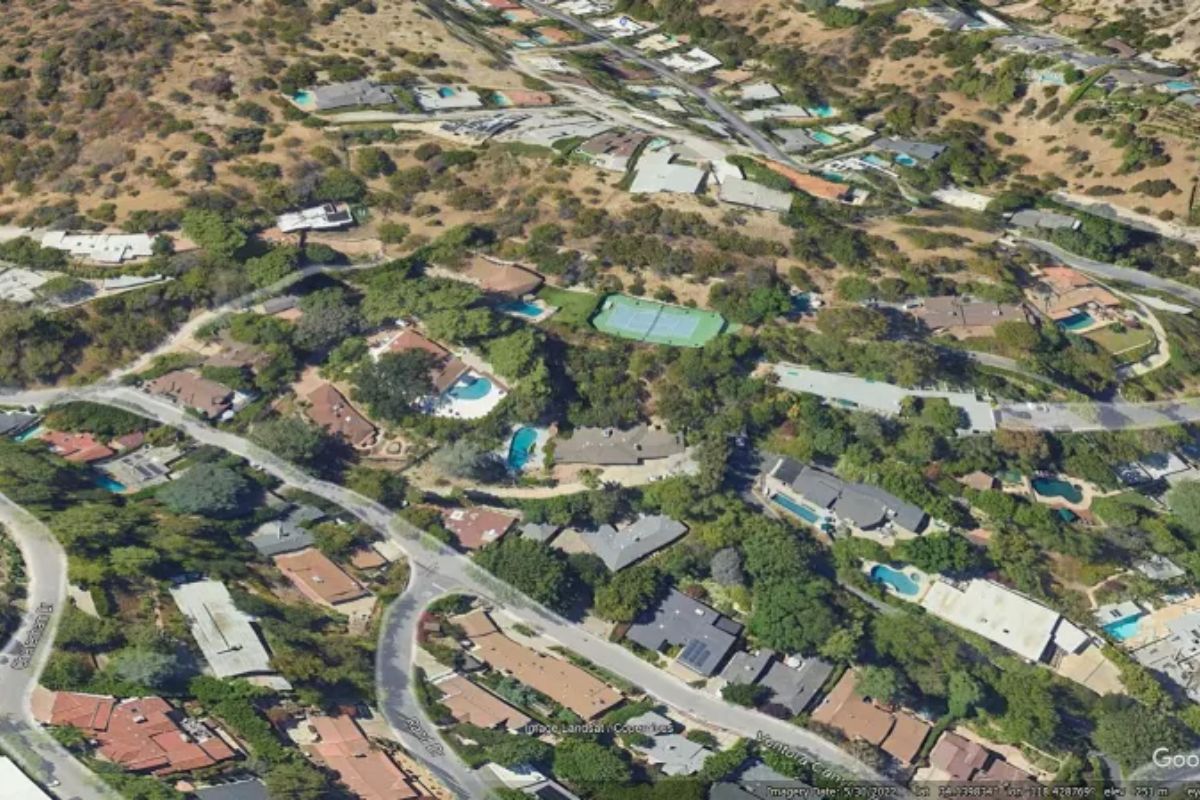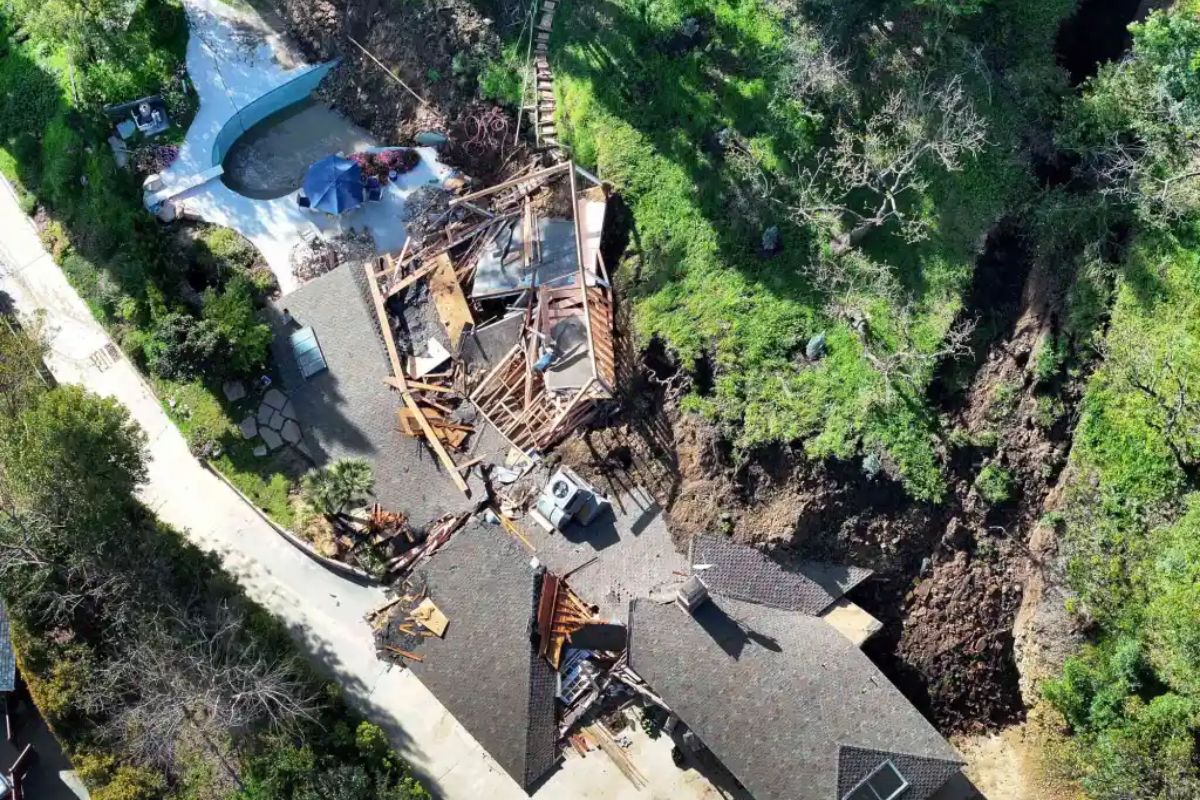Terrifying Sherman Oaks Landslide: The recent landslide in Sherman Oaks has sent shockwaves through Los Angeles, prompting concerns about the stability of the region’s terrain.
The incident has drawn attention to the complex interplay between geological factors and urban development, raising questions about the city’s preparedness for such natural disasters.
As experts scramble to assess the extent of the damage, it becomes clear that this event may have far-reaching implications for the safety and future planning of not just Sherman Oaks but the entire city of Los Angeles.
Incident Overview
In the wake of the terrifying Sherman Oaks landslide that shook Los Angeles on March 13, 2023, an in-depth incident overview reveals the destructive impact on multiple homes in the area. At least three houses in Sherman Oaks were either severely damaged or completely destroyed as a result of the deep-seated landslide. Fortunately, despite the event occurring in the early morning hours, there were no reported casualties, providing a silver lining amidst the devastation.
Aerial imagery captured by NBC News offers a stark visualization of the aftermath of the landslide. The images depict a scene characterized by a deep-seated block failure, a type of landslide where a massive block of earth detaches and moves downslope, often with significant force. The presence of a near-vertical rear scarp further indicates the intensity of the event and the sheer power exerted by the moving mass of soil and rock.
The impact on the affected homes is evident, with structures either partially submerged or collapsed under the weight of the landslide. The debris scattered across the area serves as a somber reminder of the sudden and destructive force of nature that can wreak havoc on communities. As the residents of Sherman Oaks grapple with the aftermath of this disaster, the incident underscores the importance of understanding and mitigating the risks posed by natural hazards in vulnerable regions.
Geographical and Environmental Context
The geographical and environmental context surrounding the Sherman Oaks landslide in Los Angeles provides critical insights into the factors contributing to the devastating event.
- Location: The landslide occurred at coordinates 34.1398, -118.4285, indicating a specific geographic point where the event unfolded.
- Rainfall Patterns: Despite heavy rainfall in California over the preceding winter, the landslide took place during dry weather. This anomaly raises questions about the role of past precipitation in destabilizing the area.
- Groundwater Levels: The paper suggests that elevated groundwater levels resulting from winter rains may have contributed to the slope’s instability. This highlights the interconnectedness of seasonal weather patterns and geological events.
- Environmental Impact: The landslide not only poses immediate risks to inhabitants but also underscores the broader environmental implications of natural disasters in urban areas. Understanding these impacts is crucial for future mitigation efforts and urban planning strategies.
Analyzing the geographical and environmental context of the Sherman Oaks landslide offers a deeper understanding of the complex interactions between natural processes and human settlements. By examining factors such as location, rainfall patterns, groundwater levels, and environmental impact, researchers can better comprehend the dynamics at play in such events, ultimately leading to more informed decision-making and disaster preparedness measures.
Potential Triggering Factors
Upon careful examination of the landslide incident in Sherman Oaks, a critical exploration of potential triggering factors reveals crucial insights into the sequence of events leading to the destructive phenomenon. The presence of an unsupported excavation on the slope, as highlighted in an NBC video, emerges as a significant factor warranting thorough investigation. This observation prompts questions about the excavation’s contribution to the landslide and underscores the necessity of its specifics, including the timing, scale, and stability calculations.
Understanding the excavation’s role in triggering the landslide is paramount. The timing of the excavation activities relative to the onset of the landslide could provide valuable clues regarding causality. Moreover, an assessment of the excavation’s scale and depth is essential for evaluating its destabilizing potential on the slope. Stability calculations can shed light on whether the excavation altered the natural equilibrium of the terrain, rendering it susceptible to failure.
In light of these considerations, a comprehensive analysis of the excavation is imperative for pinpointing the factors that precipitated the landslide in Sherman Oaks. By scrutinizing the excavation’s characteristics and their interplay with the environmental conditions, a clearer picture of the events leading up to the landslide can be elucidated, aiding in the formulation of effective mitigation strategies.
Implications and Recommendations
Exploring the ramifications and suggested actions arising from the Sherman Oaks landslide incident unveils critical insights into enhancing slope management practices and minimizing landslide risks in vulnerable regions. The following recommendations are essential for mitigating landslide hazards and ensuring the safety of communities:
- Comprehensive Stability Assessments: Conduct thorough stability assessments before any slope excavation activities. This step is crucial in understanding the geotechnical characteristics of the area and identifying potential risks associated with excavation.
- Careful Consideration: Exercise caution and meticulous planning when engaging in any construction or excavation work near slopes. Consider the impact of such activities on the stability of the surrounding land and take necessary precautions to prevent destabilization.
- Understanding Landslide Hazards: Invest in research and education programs to enhance public awareness of landslide hazards. By educating communities about the signs of potential landslides and the importance of early detection, the risk of casualties and property damage can be significantly reduced.
- Effective Management Strategies: Implement robust landslide management strategies in vulnerable regions. This includes the establishment of monitoring systems, emergency response plans, and regulations that govern construction practices near slopes to minimize risks and ensure swift action in the event of a landslide.
ALSO READ: 400 Dollar Price Tag for Las Vegas California Train Ride Shocking Report Reveals
News in Brief
The recent Sherman Oaks landslide in Los Angeles has sparked fears about the area’s stability and raised questions about urban development practices. The incident damaged multiple homes, but thankfully, there were no casualties. Aerial imagery reveals a deep-seated block failure, emphasizing the landslide’s destructive force.
Geographical factors, including elevated groundwater levels and past rainfall, are under scrutiny as potential contributors. An unsupported excavation near the site warrants investigation into its role in triggering the landslide.
To mitigate future risks, experts stress the need for comprehensive stability assessments before excavation activities and careful urban planning near slopes. Public awareness and robust management strategies are crucial for minimizing landslide hazards and ensuring community safety.



